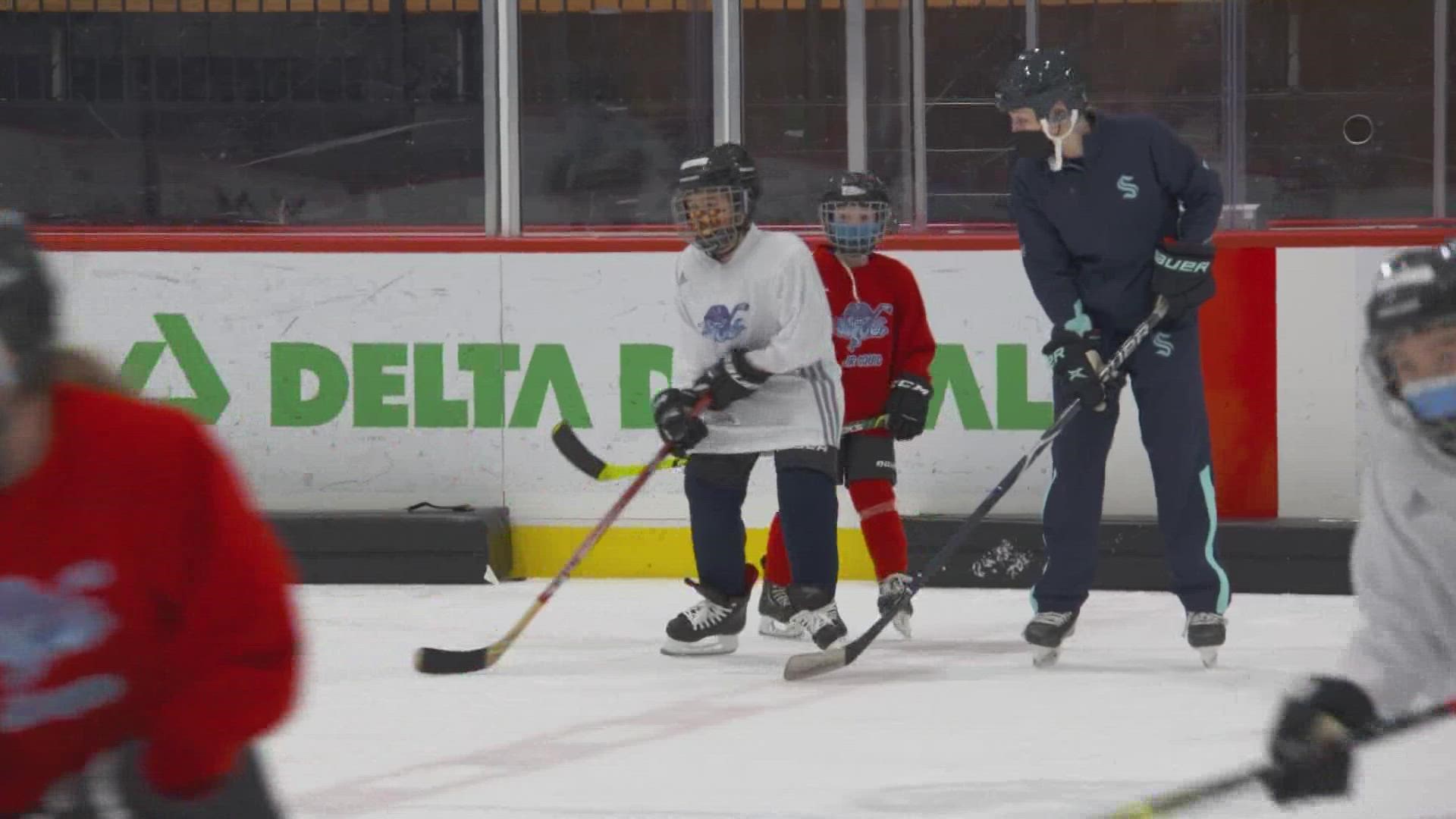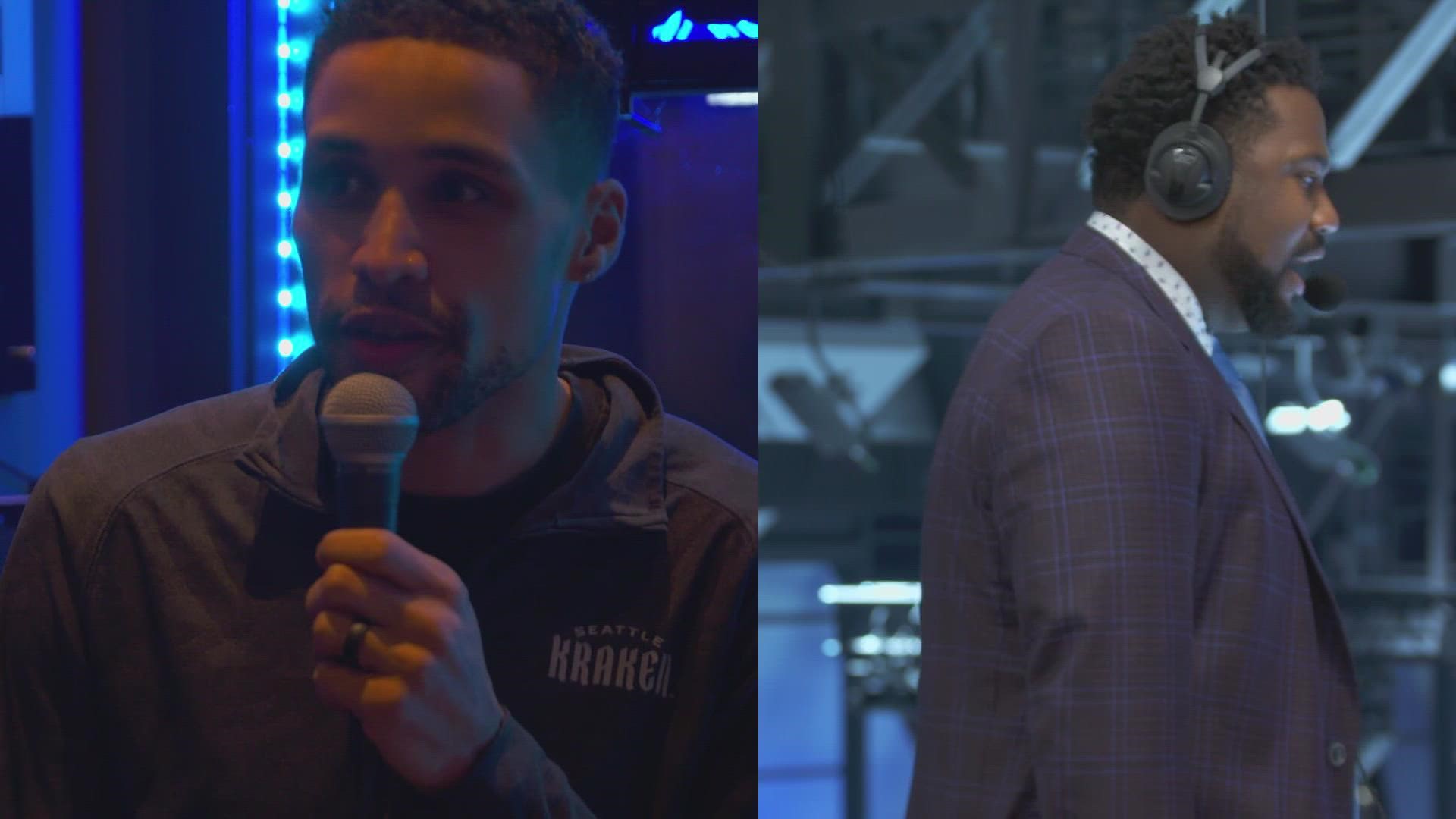SEATTLE — Alicia Alarcon sat on a bench, staring into an uncertain future.
"The times have been really hard," said Alarcon, her voice trailing off. "I mean, just like for many children, just struggling, being cooped up in the house, and you know, having a lot of things taken away from them."
Alarcon is a single mother of three kids and said she never thought she'd be balancing taking care of her two daughters while watching her son play hockey at the Kraken Community Ice Rink in Northgate.
"I think it's just a sport that maybe many parents don't know about and maybe parents of color," said Alarcon.
Hockey is, after all, not known for diversity and inclusion.
The sport was invented in the United Kingdom and caught on in the country nicknamed the Great White North: Canada.
It was also the last of the major sports leagues to see the color barrier broken in 1958 by Willie O'Ree, whose grandparents escaped slavery through the Underground Railroad. The sport also trails behind other major professional sports, with roughly 3% of NHL players identifying as African American.
"I was on a bit of an island"
Everett Fitzhugh, the play-by-play radio announcer for the Seattle Kraken, acknowledges the uncomfortable truth.
"I got into hockey by accident to fit in with my friends," said Fitzhugh. "I saw an [Edmonton] Oilers game one time. They had two Black players on the same team. So for me, that was cool to see, and I'd never seen a lot of folks who looked like me playing the sport."
Fitzhugh grew up in Detroit and said he was made fun of for his interest in the sport.
"It was a little disheartening at times because I did feel like I was on a bit of an island as the only Black hockey fan within my circle of friends, but I stuck with it," he said. "My mom always told me there's no white or Black sport; there's no white or Black music. If it's something you're passionate about, if it is something that you're interested in, then you should do whatever you can do to foster that interest."
JT Brown grew up in Minnesota around the same time and recalled an incident that helped shape his fight for equality. He was on the receiving end of a slur in the rink.
Brown said the ref didn't hear the comment, so he wasn't able to call a penalty.
"You know, I had a coach that stuck up for me and believed in me at a young age, and said, 'Fine, we'll forfeit the game,'" said Brown. "I think that was a big moment for myself, in my growing up, but if that might not have happened, who knows?"
Brown took on an advocacy role while in the NHL. He was the first player to raise a fist during the National Anthem and went out of his way to support organizations interested in boosting diversity, like the Black Girl Hockey Club.
A historic moment in the broadcast booth
On Thursday, Feb. 17, the duo of Fitzhugh and Brown will make history when they share a broadcast booth for the first time. They will be the first all-Black broadcast team in NHL history, with Fitzhugh doing play-by-play alongside Brown for the Kraken broadcast against the Winnipeg Jets.
It will be a significant moment for a league that does seem interested in creating momentum for change.
But both men said more change would involve increasing accessibility on the ground floor.
"Soccer, you just have a ball; you can practice," said Brown. "You have basketball; you go find a hoop. You can play catch in baseball and football. But hockey, ice is a big important part of that. It is challenging to make that accessible for everybody."
"I think I think for a lot of people hockey can be cost-prohibitive, between the equipment between the skates between the ice time, the team fees, all of that stuff," explained Fitzhugh. "It doesn't matter if you're Black; it's not just a racial issue, I think it's an economic issue. The fact that hockey can be prohibitive in that in that way. I think it starts at the youth level for me."
NHL, Kraken invest in youth programs
That brings us back to the Kraken Community Ice Rink, where Alarcon was sitting.
Her 9-year-old son Dallan skated around on the Kraken's main rink as part of the "Junior Squids." Alarcon said the gear and ice time were donated, and the fees were paid for by the Kraken's One Roof Foundation.
And Dallan is not alone.
The Kraken said there are 1,100 current "Learn to Skate" participants and 25% of them are BIPOC. The One Roof Foundation is providing financial assistance to 159 families, 80% of which are families of color, according to Kyle Boyd, Seattle Kraken's director of youth and community development.
Boyd said the NHL is fronting the bill for all the new gear in the "Learn to Play" program as part of the initiative to change the trajectory of the game with kids ages 5 to 9.
Kids who are interested in figure skating have also been given free ice time and skates as part of the new facility programming.
Alarcon said Dallan is thriving and that he's starting to watch Kraken games regularly.
"He looks forward to it each week," said Alarcon. "It has been really, really cool."


